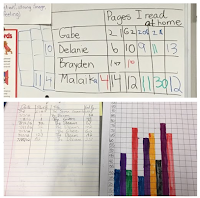I spent some time with a group of middle school teachers this week discussing how to fit in the components of balanced literacy into the workshop model. We had been focusing on Reading Workshop in a 45 minute class period. Some of the pieces we needed to consider were:
-Mini Lesson
-Lots of time for reading time
-Mid Workshop Teaching Point
-Teaching Share
-Time for Partnerships or Book Clubs- Building in Accountable Talk
-Read Aloud… (Each day? A few times throughout the week? Anchor Experiences?) Including time for Accountable Talk?
- Vocabulary / Word Work instruction and follow up experiences
Below are a few “options” or ideas as to how to structure the week. These certainly are not perfect; but, I thought perhaps worth sharing to consider how to fit it all in when time is a barrier.
The first piece that we identified is what our bottom line or non-negotiable was within workshop. I can speak for myself and that is committing to plenty of TIME for students to read.
Feel free to share your schedules and how you everything in in your workshop in the comments section :).
Here is a “key” to help navigate my abbreviations:
ML: Mini Lesson
IR: Independent Read
SG: Strategy Group / Small Group
MWTP: Mid-workshop Teaching Point
TS: Teaching Share
P: Partnership
BC: Book Club
Centers: This is where I fit in vocabulary instruction. First, by introducing some words and then throughout a week or two kids will engage in quick follow-up activities that are playful to practice using the words. *I would consider bringing my “formal” vocabulary work / centers in for two weeks at a time (two weeks on, two weeks off). This is what worked best for me in a middle school schedule, as I wanted to ensure lots of time for kids to read.
*Anchor Experience- An instructional model used when my schedule does not allow me to read aloud each day or a few times throughout the week. I may take a class period to do a read aloud and have an accountable talk session prior to a unit or twice throughout the unit to build a repertoire of mentor texts we will need to support our unit goals as I model. Ideally, I would read each day or a few times throughout the week, but sometimes schedules do not allow for this. (LINK to Read Aloud with Accountable Talk post)
**The times I outline are purely an estimate. It all depends on the day!





